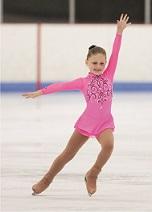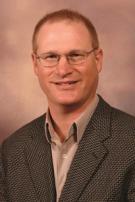

Every four years, winter sports get a huge boost from the visibility at the Olympics, and such was the case with the 2014 Winter Olympics in Sochi, Russia. One sport that clearly benefits from the Olympics is ice hockey.
“We had a record year last year in terms of number of players,” says Dave Fischer, the senior director of communications for USA Hockey Inc. In 2014, USA Hockey had 533,172 registered players across all age groups, “the most in the history of USA Hockey.” In 1990, the organization had 195,000 members. Since then, new trends have been afoot.
“Participation has grown significantly at all levels,” Fischer adds. “For the last five years, we’ve had over 100,000 kids eight and under playing the game. And girls’ and women’s hockey continue to grow, as does disabled hockey, particularly sled hockey. The exposure of the sport, especially at the Sochi Olympics, has really helped it to grow.”

In 2018, the International Ice Hockey Federation World Junior Hockey Championships comes back to the U.S. (as of press time, three cities were finalists to host the event: Buffalo, Pittsburgh and St. Louis.) The last time the event was held in the U.S., in 2011 in Buffalo, it attracted teams from 10 countries and over 300,000 fans. “Just to see the strength of the proposals of some of these cities looking to host the 2018 championship gives an idea of the continued advancement of ice hockey in the U.S.,” Fischer says.
And in the northern part of the country, ice hockey is a big seller for many CVBs.
“Hockey has become a major sport here,” says Michael Norton of Traverse City Tourism in Traverse City, Michigan. Traverse City has two arenas: The Howe Arena, named after NHL legend Gordie Howe, is a 25,000-square-foot public rink owned by Grand Traverse County; and Centre Ice Arena, with two sheets of ice. Centre Ice, which has 1,800 seats, is where the NHL’s Detroit Redwings have their fall training camp, and it’s where the NHL does its annual fall prospects tournament, bringing in thousands of fans who watch players trying out for NHL teams. The Howe and Center Ice arenas also host figure skating events, many organized by the Traverse City Figure Skating Club, including tournaments for the U.S. Figure Skating Association.
 In Minnesota, “hockey is a lifelong sport,” says Chris Willaert, director of the Mankato Sports Commission. “Hockey doesn’t stop after college. It’s for all ages. We have guys who are 65 and older lacing up their skates.” Willaert says women’s hockey, especially in the last 15 years, “has gotten monstrous.”
In Minnesota, “hockey is a lifelong sport,” says Chris Willaert, director of the Mankato Sports Commission. “Hockey doesn’t stop after college. It’s for all ages. We have guys who are 65 and older lacing up their skates.” Willaert says women’s hockey, especially in the last 15 years, “has gotten monstrous.”
Mankato has a number of hockey venues, including two ice sheets at All Seasons Arena. There also is the Verizon Wireless Center, where Minnesota State University–Mankato plays home matches. And Willaert says officials are looking into possible new facilities to further accommodate hockey, figure skating and curling.
Bloomington, Minnesota, also is big into hockey and other ice sports. In fact, it hosts at least 40 high school teams every year for a state hockey tournament at the Bloomington Ice Garden held in conjunction with the Let’s Play Hockey Expo, the largest hockey expo in the country, held at the Xcel Energy Center in nearby St. Paul. Bloomington also hosts the AAU National Mite Championship in March.
“Our largest tournament probably has about 250 teams,” says Todd Lehrke, the associate director of sports development for the Bloomington CVB. “One trend we’re noticing is an increase in female players and teams—it’s definitely a growing opportunity for us.”
In Colorado Springs, Colorado, February will mark the 39th annual President’s Day Hockey Tournament, which will bring in about 100 teams from around the country, and includes a sled hockey competition for kids with physical disabilities. Venues in Colorado Springs include the Broadmoor World Arena, which has one sheet of ice and over 7,000 seats, and the World Arena Ice Hall, with two sheets, one Olympic size (98 x 197 feet) and one NHL size (85 x 200 feet). There is also the city-owned Sertich Ice Center.

In 2003, the city of Everett, Washington, was awarded a Western Hockey League franchise, the Everett Silvertips, which plays at the 8,300-seat Xfinity Arena. That’s attached to another ice sheet, too, the Xfinity Community Ice Rink, seating about 300. “The Silvertips helped us expand our youth and adult hockey programs,” says Tammy Dunn, sports development manager for the Snohomish County Sports Commission. “Because of the Silvertips, we now have two youth hockey programs—Everett Youth Hockey based at the Community Ice Rink, and the Seattle Junior Hockey Association, which plays at the Olympic View Arena—and both host youth tournaments.” Also available for hockey is the Lynnwood Ice Arena, with an NHL-sized rink.
Figure Skating
Not surprisingly, figure skating also plays well at many of the locations where ice hockey lives.
Membership in U.S. Figure Skating (USFSA), the National Governing Body for the sport, has held steady the past decade, averaging about 177,000 members, says David Raith, the organization’s executive director. “It speaks strongly to the commitment of our member clubs and the new programs we’ve introduced over the past 10 years,” he says. “U.S. Figure Skating is continually evolving, seeking to meet the needs of all of its athletes, from beginners to Olympians.”

Another growth area is in synchronized skating. “The 2015 U.S. Synchronized Skating Championships brought 96 teams and more than 1,800 athletes to Providence, Rhode Island,” says Raith. “It’s apparent these athletes—the majority of them students—enjoy competing as a team.”
And, Raith notes, “Adult skating continues to grow, largely because these athletes have discovered the fitness and fun aspect of skating. The U.S. Figure Skating Adult Championships are a wildly popular event with an average of 100 competitions at one venue over four days.”
The 2016 U.S. Figure Skating National Championships will come to the Bloomington-St. Paul area Jan. 15-24. Adult and intermediate competition will be at the Xcel Energy Center in St. Paul, while junior and novice will take place at the Bloomington Ice Garden, says Lehrke.
The four ice rinks in the Snohomish County area also play host to figure skating, says Dunn. Two clubs help support events—the Everett Figure Skating Club, based at the Xfinity Arena, and the Seattle Skating Club, whose home ice is the Olympic View Arena. The Seattle club hosts the annual Ice Best Skating Competition, which drew 350 youth and adults skaters in 2015. In October, the club hosted the 2015 Northwest Pacific Regional Figure Skating Championships.
 The World Arena Ice Hall in Colorado Springs, with its two sheets of ice, is the official training site for U.S. Figure Skating, and also home to the Broadmoor Skating Club. In November 2016, the venue will host the Midwestern Figure Skating Championships, and in April 2017, it will host the ISU World Synchronized Skating Championships, with teams of all ages and skill levels.
The World Arena Ice Hall in Colorado Springs, with its two sheets of ice, is the official training site for U.S. Figure Skating, and also home to the Broadmoor Skating Club. In November 2016, the venue will host the Midwestern Figure Skating Championships, and in April 2017, it will host the ISU World Synchronized Skating Championships, with teams of all ages and skill levels.
Curling
Of course, where there’s ice, there’s also, most likely, curling—even though curling ice is slightly different from skating ice. (Curling ice has a texture to it, called “pebbling.”)
“Curling has really taken off since the 2002 Olympics in Salt Lake City,” says USA Curling CEO Rick Patzke. “That was kind of our coming-out party, when MSNBC put about 50 hours on the air.” In the last dozen years, membership in USA Curling more than doubled to about 20,500, with about 170 curling clubs. All but five states have curling clubs
Patzke notes since 2002, there’s been an influx of younger players, which certainly is helped by USA Curling’s good relationship with NBC Sports. “When NBC has it on during they Olympics, they have a huge following, especially from the Wall Street crowd,” he says.

In Colorado Springs, the Broadmoor Curling Club also hosts an annual bonspiel every April.
Snow Sports
Of course, one can’t mention winter sports and not think of snow. Skiing and snowboarding remain huge; in fact, Snowsports Industries America, the trade association for the winter sports industry, reports there were 9,378,000 participants in Alpine (downhill) skiing last year, and another 7,676,000 who participated in snowboarding. And that’s not even taking into consideration all the variations on competitions within those two sports, including Nordic, slalom, halfpipe, boardercross, slopestyle, jumping and more.
On the snow, Lehrke says the Highland Hills Ski Area in Bloomington is expecting about 2,000 ski racers to participate in the inaugural Ski Rennet cross-country event on Jan. 23. “We’re looking to grow it to 6,000-plus in a few years,” he says. Highland Hills also has an international ski jump competition, with jumpers from ages 10 on up.
Eric Engelbarts, the executive director of the Meijer State Games of Michigan, part of the West Michigan Sports Commission, says the Meijer winter games have a number of skiing events, many sanctioned. The Meijer State Games, which will bring in about 2,200 athletes for the February competition, includes cross-country skiing, ski and snowboard events, snowshoe events, and fatbike racing, which takes place on a snow-covered golf course. (In 2017, although not part of the Meijer Games, West Michigan will host the USA Cycling National Fatbike Championships.) New for the Meijer Games this year will be luge—“we’re blessed here in West Michigan to have a luge track,” Engelbarts says.

But Traverse City also has its share of downhill. “All our high schools have both cross-country and downhill ski teams, and we have the Grand Traverse Ski Club, which is downhill,” Norton says. “There’s also a good deal of snowboard action on our ski hills. And fatbike is becoming a bigger deal here, too.”
With the trends at work now, planners of sports events can count on the continued evolution of the snow and ice sport industry. A rich landscape of venues, meanwhile, will be ready to host any type of contest that emerges.

